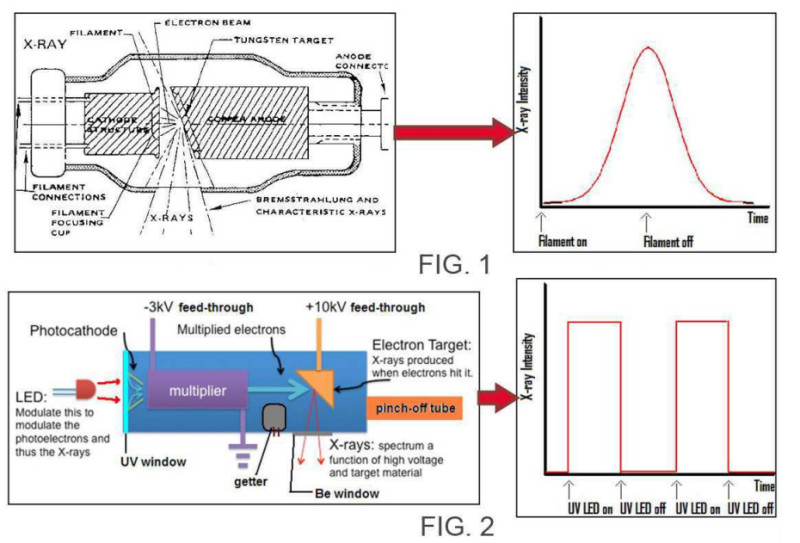X-ray data transmission in outer space
- Transfer

Among the equipment delivered by NASA in April to the ISS, there is an experimental facility for transmitting data in open space by X-ray radiation (XCOM - X-ray communications). A modulated X-ray source (MXS - modulated X-ray source, on the KDPV bottom in the middle) will be placed outside the ISS. To register the radiation on the ISS, there is already a NICER device - the Neutron Star Interior Composition Explorer, installed back in 2017 to study the possibility of using X-ray pulsars as space navigation landmarks. So the devices are located at the station relative to each other:

Instead of a hot cathode, a magnesium photocathode illuminated by ultraviolet LEDs is used in the source. Between it and the anode there is an electron multiplier for repeated secondary emission - a ready-made component produced for mass spectrometers. The voltage of the electron multiplier is -3 kV, the anode + 10 kV. The conventional and new x-ray tubes are shown below for comparison:

The device allows you to quickly modulate x-ray radiation from ultraviolet LEDs. The pulse duration can be fractions of a nanosecond, which is enough to transfer data at a speed of several Gb / s. The body of the device can be made of 3D printing from metal. It weighs 160 grams and fits in the palm of your hand (of course, it’s better to take it in your hands when turned off).
Having received a parallel, non-diverging beam, significant power losses at large distances can be avoided. True, during the experiments, the distance will be only 50 m, but you have to start somewhere. Similar sources can later find application not only for data transmission, but also as artificial space landmarks-beacons, as well as on the ground for X-ray analysis and chemical analysis by X-ray spectroscopy.
And given what holiday it is today, we are looking forward to the near-future space X-ray 73!
